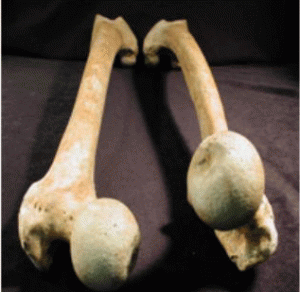 By now you should have a general understanding that having good hip mobility is important for health and to maximize athletic performance.
By now you should have a general understanding that having good hip mobility is important for health and to maximize athletic performance.
Loss of hip extension has been shown to accelerate degenerative changes in athletes as young as 17 years old. A loss of hip internal rotation alters normal hip proprioception and makes it difficult to effectively stabilize the hip.
When you’re screening your athletes’ hip range of motion you may come across some athletes that present with excessive femoral anteversion.
Femoral anteversion is the angular difference between the axis of the femoral neck and the transcondylar axis of the knee. In males, it’s typically about 8 degrees of anteversion and in females about 14 degrees. In the photo, the femur on the left is considered normal, and the femur on the right shows excessive anteversion. You’ll typically use Craig’s test to determine the degree of femoral anteversion, however, if you aren’t trained to use Craig’s test, you can get a good idea from assessing hip rotation in prone.
Hip internal rotation of 70 degrees would be considered abnormal and may indicated excessive hip anterversion. You’ll also find a loss of hip external rotation.
Because this is a structural adaptation, the rotation is not something that will change with typical hip rotation mobility exercises and attempting to do so will only result in injury. If you should have an athlete with excessive hip internal rotation as in the video, developing a stronger core and glutes is essential.
(part 2 coming)